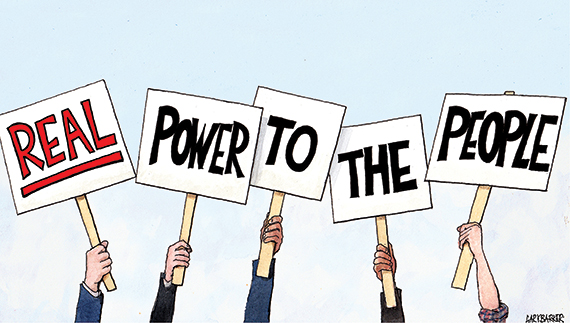 Is the fulcrum of power re-balancing between London developers, politicians and residents? Several landmark schemes, including Bishopsgate Goodsyard and the Paddington Pole, have been pulled in the face of public revolt.
Is the fulcrum of power re-balancing between London developers, politicians and residents? Several landmark schemes, including Bishopsgate Goodsyard and the Paddington Pole, have been pulled in the face of public revolt.
Developers’ websites and publicity boards want you to believe that all is new and lovely. Most are bloated with protestations of “community consultation” and “public engagement”.
This is nearly all hot air. The British planning and development system mediates imperfectly between what people like and what gets built. The transmogrification of the Paddington Pole into the Paddington Box is a fascinating example. Forced into a rethink by overwhelming public opposition to the Pole, Irvine Sellar has come up with the Box, the product of some carefully structured, though brief, consultation sessions.
To read the PR, the Paddington Box would appear to be the natural consequence of such engagement. Nothing could be less true. In reality, the oversupply in London’s luxury housing market has driven the change of use to commercial. The Box is, then, a greedy attempt to maximise profits on the space. It is just a huge glass box, spreadsheet architecture at its worst.
This matters because most people just don’t like such egotistical place-faking. And this reduces public support for new development. Create Streets knows from its MORI polling, as well as from our work with community groups, that one of the easiest ways to win popular local support for a development is to work with a community as a genuine, not an ersatz, exercise and to propose something that people like. Funny, that.
For example, in Paddington, we recently ran a public competition to find a better masterplan for the site. On a budget of, well, nothing, and working with community members and local councillors as judges, we mined an embarrassment of riches among the entries: improving Praed Street, working with St Mary’s Hospital, re-using the lovely discarded sorting office. (So good were some ideas that Sellar appears to have pinched them. He’s very welcome.)
Meanwhile, at the Mount Pleasant site, our community-led proposed urban form is actually denser than the consented proposal but attracts more than 95% local support because it fits in with narrow streets and a central circus.
We should build with as much popular consent as possible. If there is to be a democratically controlled planning system, it should be mediating between what the market wants and what most residents want.
It is time for a direct planning revolution so that a network of provably popular forms and housing patterns can be pre-approved and delivered with more speed, efficiency and certainty, thus lowering financing costs and barriers to entry. This would permit councils to perform a populist, place-shaping role – as Westminster is signally failing to do in Paddington.
It is time to stop asking, “How do we build more homes?” and to start asking, “How do we make new homes more popular?”
Nicholas Boys Smith is the director of Create Streets











